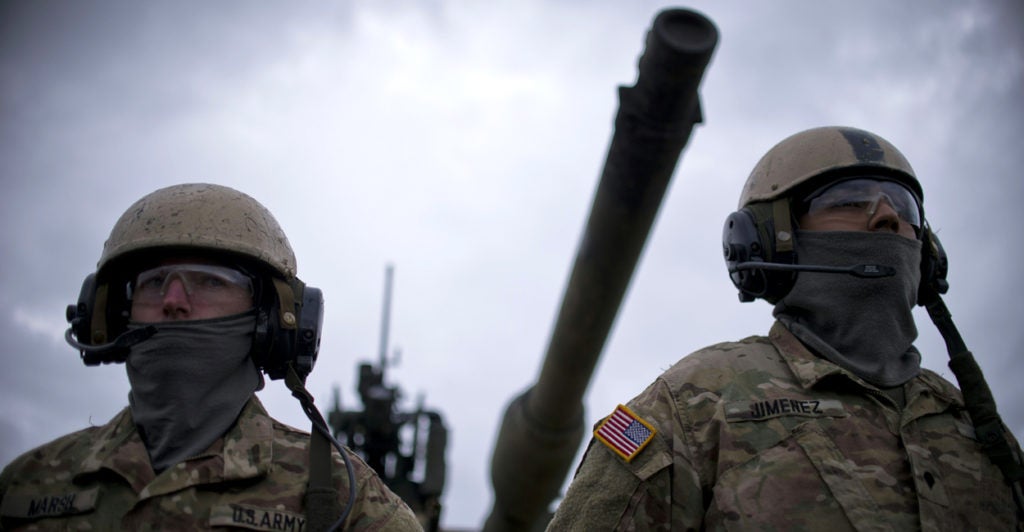The House Armed Services Committee and its Senate counterpart have finally passed their respective versions of the 2020 National Defense Authorization Act, with the House coming in at $733 billion and the Senate matching, in general terms, the Trump administration’s request for $750 billion.
While the $17 billion difference between the two is a significant amount of money on its own, it represents a mere 2% or so in the context of the overall defense budget, and therefore should be easily reconciled in conference committee negotiations—were it not for the significant difference of opinion on defense that it represents between the bipartisan (25-2) Senate bill and Democrat-crafted (33-24) House bill.
In either case—$733 billion or $750 billion—the defense budget is a lot of money. But is it enough? Or too much?
Well, that depends on what one thinks either amount of money buys in military capability and how that relates to the ability of our military to fulfill its mission—namely, to defend our country, our citizens, and our interests worldwide.
In the work we do here at The Heritage Foundation, we try to convey what it takes to have a military that is up to the task of winning in combat, especially when facing a major competitor.
Our nation expects its military to be relevant, competent, and effective—not simply something to be kept at home as a force in name only.
But that doesn’t mean it should be casually committed to action, or policies adopted that are effectively “checks” written that our military might have to “cash,” without understanding what such a commitment actually means in implementation.
Further, our military shouldn’t be committed without having been given the proper resources for equipping, training, and sustaining readiness over time.
Unfortunately, our country has gotten used to hearing about our military conducting operations in foreign lands that can be handled by the relatively small force we have and at a very low cost in casualties, historically speaking.
Operations since the terrorist attacks of Sept. 11, 2001, have been against irregular forces that do not possess navies, air forces, armor or artillery, or really any capability that a large state power would bring to a war.
There’s a danger in thinking our military can execute its full mission with a fraction of the resources that are actually needed in those circumstances.
In the 1980s, when the U.S. opposed the Soviet Union on a global stage, our Navy had roughly 580 ships, our pilots flew more than 220 hours a year to maintain their skills, and our Army had 780,000 soldiers on active duty.
We maintained U.S. forces in substantial numbers in many countries around the world to demonstrate solidarity with allies, to mitigate the challenges of time and space in key regions thousands of miles from the U.S., and to more effectively deter opportunistic behavior from the Soviet Union or anyone else who might think to impose their will on their neighbors.
Today, we and our interests—which include those of key allies—are challenged by Russia and China, regionally by Iran, and more locally by North Korea.
We are pressed by the destabilizing influences of terrorist groups and dysfunctional regimes in the Americas, Africa, and the Middle East that weaken security and stability in their respective neighborhoods, while many of our allies and partners have chosen to woefully underfund their own defense capabilities and are thus less able to contribute to securing mutual interests.
Yet in comparison with the global competition of the 1980s, our Navy now has 287 ships, our pilots flew an average of less than 120 hours this past year, our Army has fewer than 480,000 soldiers, and our presence overseas has been reduced to bare minimums.
Whereas we used to invest between 5% and 6% of gross domestic product in national defense, we now average less than 3.5%, while the cost of manpower alone consumes roughly 60% of service budgets.
In short, it is a challenge to convey to policymakers—and to the public—the current status of U.S. military power and how it relates to the nature and demands of “great-power competition,” for which our competitors are making serous investments.
We have a lot of ground to make up after a quarter-century of underinvestment, consumption of existing military capabilities in operations since 2001, and an explosion of debt-based spending on very popular entitlements that will be hard to roll back, and which will make it ever harder to increase spending on defense—one of the few things our government is actually obligated to do.
To regain the capabilities, capacity, and readiness it needs to do the job it must do, our military needs the sort of sustained investment and support recommended by former Secretary of Defense James Mattis and echoed by the president and various members of Congress who know that defense budget volatility, continuing resolutions, and underinvestment will lead to a weaker America, emboldened competitors, dismayed allies, and core interests placed at risk.
Our country and our military deserve better.
